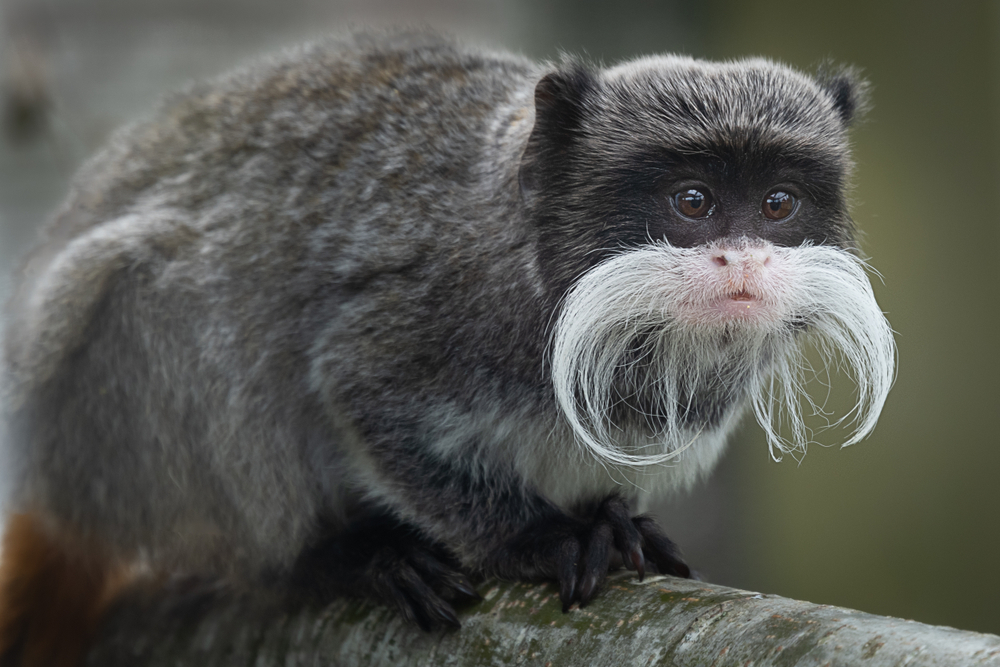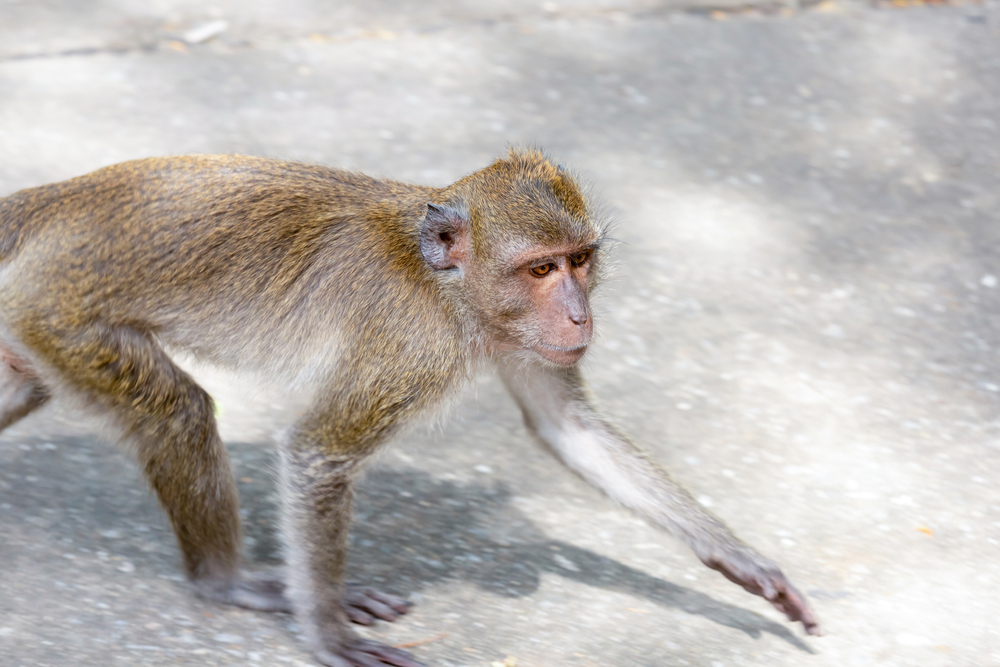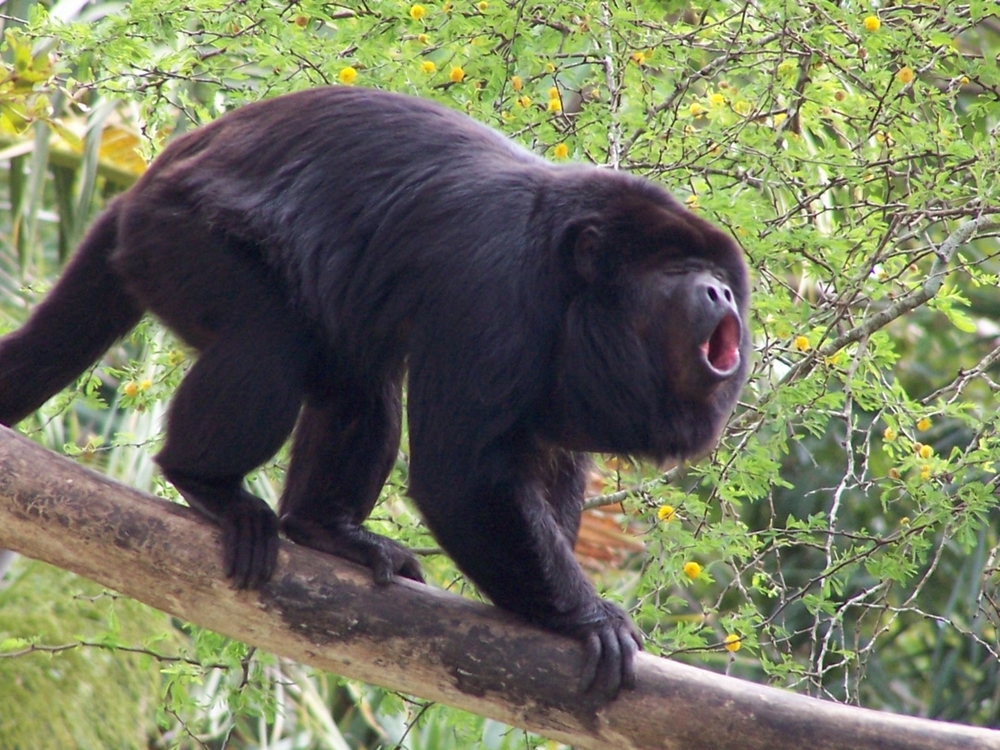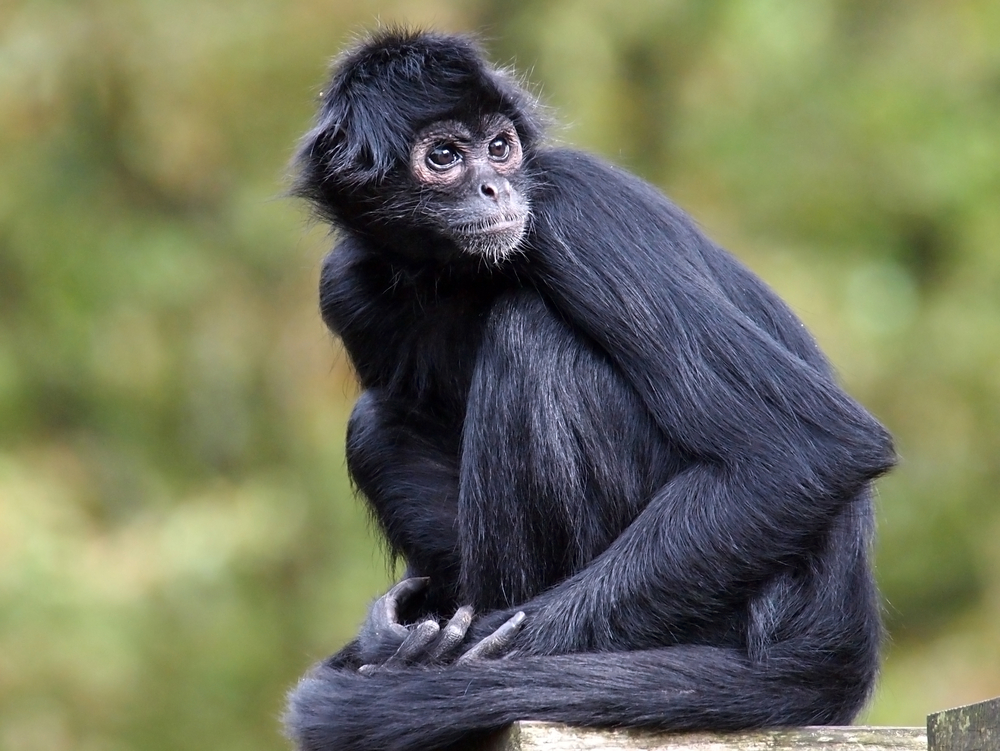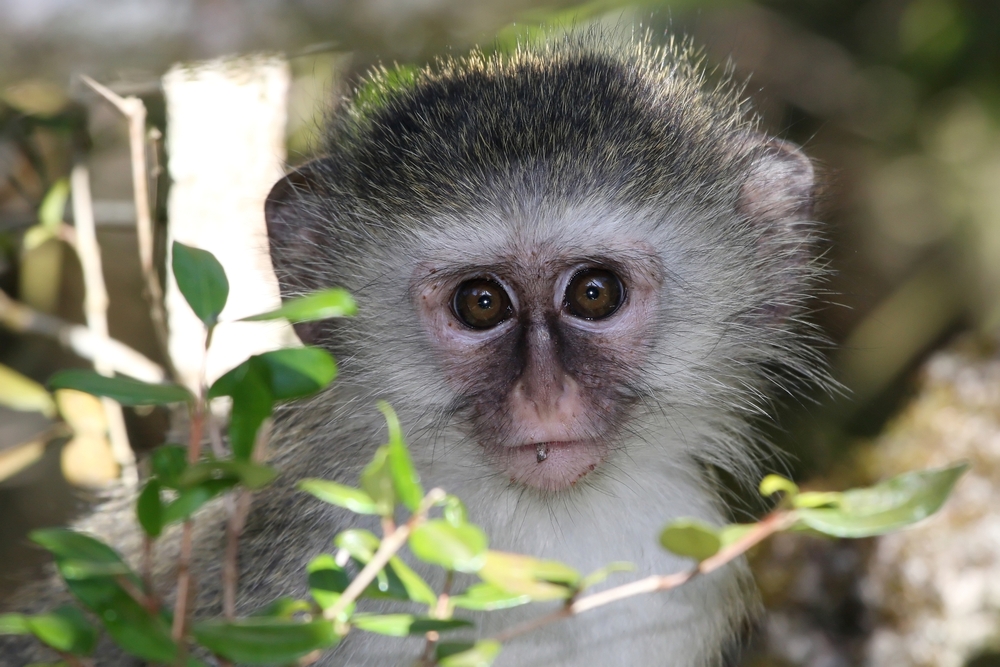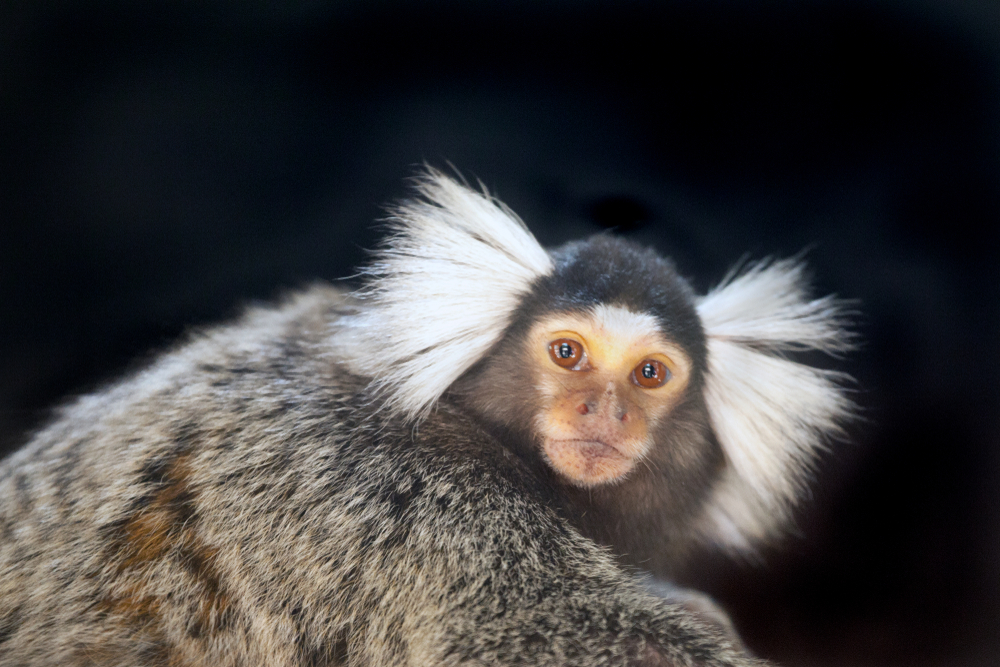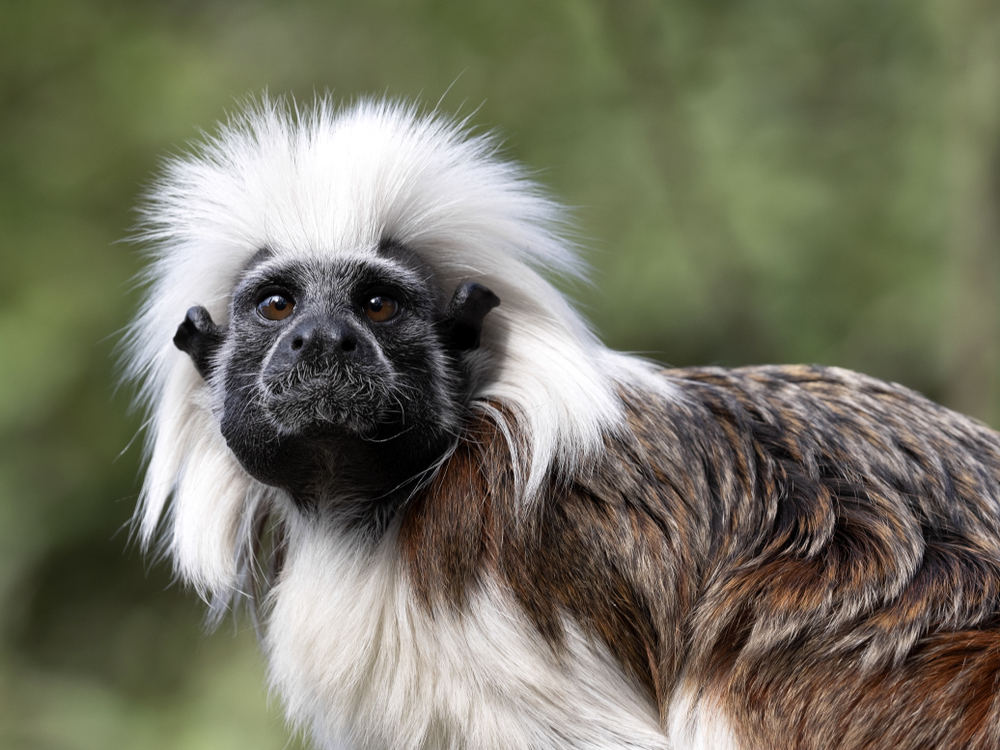About
The emperor tamarin (Saguinus imperator) is a small, charismatic monkey native to the lowland rainforests of the southwestern Amazon Basin, particularly in Peru, Brazil, and Bolivia. A member of the Callitrichidae family—alongside marmosets and other tamarins—this species is instantly recognizable by its long, flowing white mustache that curls downward past the chin, giving it a regal, elderly appearance and inspiring its name.
Weighing only 250–300 grams (9–11 ounces) and measuring about 23–26 cm (9–10 inches) in body length (with an additional 35–40 cm tail), the emperor tamarin has grayish fur, reddish-orange markings on the chest and lower limbs, and a non-prehensile tail used for balance while moving through the forest canopy. Agile and energetic, it leaps nimbly between branches in search of food.
Its diet consists of fruit, nectar, tree sap, insects, and small vertebrates. Emperor tamarins live in cooperative family groups of 2 to 8 individuals, often sharing territories with other tamarin species. Group members take part in raising offspring, with fathers and older siblings carrying infants while the mother nurses them.
Highly social and vocal, emperor tamarins use chirps, trills, and whistles to maintain group cohesion and signal alarm. Their playful nature and distinctive appearance have made them a favorite among zoo visitors and conservation educators.
Although not currently endangered, emperor tamarins are classified as Near Threatened by the IUCN due to habitat loss from deforestation, logging, and agricultural expansion in the Amazon. Conservation efforts focus on protecting their forest habitats and promoting sustainable land use.
Threatened:
Extinct
Critically Endangered
Endangered
Vulnerable
Near Threatened
Least Concern



































































